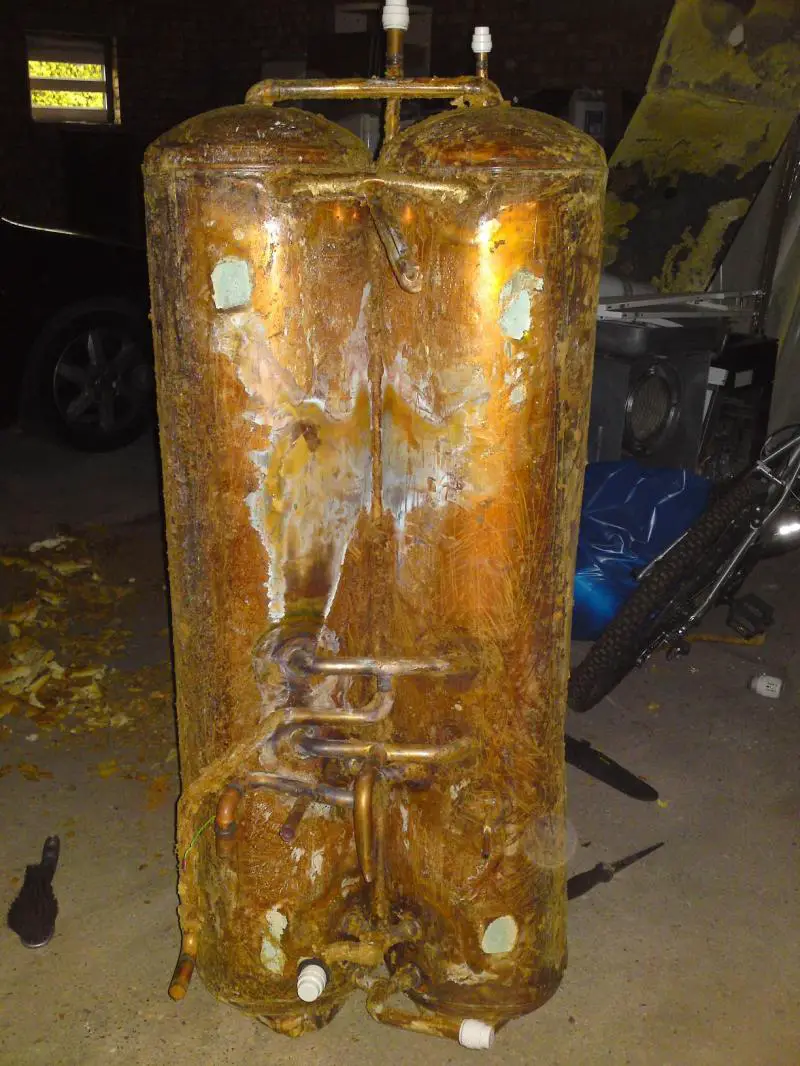B
BertCoombes
Thermal stores, rightly, got a rotten reputation in this country due to poor specification and design..and in part being a way for a specifier to save a few pounds...with a correspondingly poor installation
we would do well do adopt a different vernacular, buffer tanks for uncontrolled heat sources.
Thermal stores do work with condensing boilers, but poorly. Thats in part because high temerature themal stores dont really exist out if the UK...
In energy efficiency terms what is the point of over heating water to bring down the temperature to usable temperature...much better to minimise wastage by specifying a product that designs out waste...ie unnecesarily high temperatures...
I registered here to tell people not to use thermal stores for UFH if no more than 10 to 12kW is needed for UFH by using a state of the art very low modulating boiler.
I found many just did not understand thermal stores. Some of the points that come up:
1. They develop sludge.
Some did as they were poorly designed and poorly specified as you stated. Having the CH off a coil in the thermal store cylinder eliminates sludge collection in the cylinder. As it has been mentioned the sludge is just relocated from the rads into the cylinder. A big inspection plate can be on the bottom of the cylinder to remove sludge, but best to have the CH coil to avoid it building up in the first place. Continental makers have domed bottoms so sludge cannot build up and stays in the rads if the system is neglected.
2. They run too hot so are inefficient.
Using an oversized DHW plate heat exchanger gives a lower store temperature and need only be 5 to 10C above the DHW setpoint temperature. If set to 50C then a store temperature of 55-60C will be fine. If a plate heat exchanger send hot water back to the thermal store it is not lost, the heat is still in the store.
3. Condensing boilers do not condense running inefficiently.
This is a fallacy. As Dan has testified, his condenses all the run time. The lack of any cycling greatly increases boiler efficiency.
Some makers refer to their thermal stores as "accumulators", which they are. They accumulate energy in the form of heat.
An advantage of a thermal store is that a smaller, cheaper, boiler sized for "average" use can be fitted. In house extensions a new boiler may not be needed if the existing cylinder is replaced by a thermal store and CH run from the store. In one extension job with an extra bathroom I did this, and fitted a TMV on the boiler return set to 55C to ensure no condensing in the non-condensing boiler. The boiler works more efficiently at lower temperatures and the customer came back and said he is paying no more in gas than he was before the extension.
Hybrid cars and trucks use the accumulator (think thermal store) idea. They use a large battery (accumulator) or hydraulic accumulator as in some trucks to store energy to use for acceleration and claw back braking energy. A largish car running down the motorway at 70mph only needs 20 to 30hp but the engine will be over 100hp and large, heavy, thirsty and expensive. The extra engine hp is for acceleration.
They downsize the engine to give greater efficiency (as you can downside a boiler heating a store) and use the stored energy to boost the acceleration in turning an assisting electric motor or hydraulic motor (think of a thermal store quickly heating up a house on start up with the stored heat). The stored energy in vehicles also evens out power delivery to the wheels (as does a thermal store in using a Smart pump on CH zones). Reclaimed braking energy is stored in the "accumulators" to reuse to propel the vehicle. In some setups, the Vauxhall Ampera come to mind, the charging engine runs at a constant highly efficient speed, or speed range, charging only the accumulator and not driving the wheels (think of a boiler heating only a thermal store with no cycling and No CH connected to it).
If designed and installed properly, thermal stores are the most efficient systems you can have. However, back to my first ever post here. Technical advances in the modulating ranges of boilers and their controls in cases (low temperature UFH) where a store was the ideal choice, that now need not be the case.
Glad to help.


